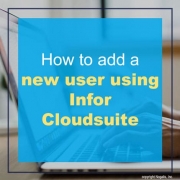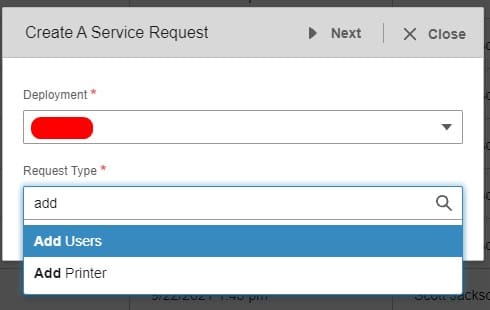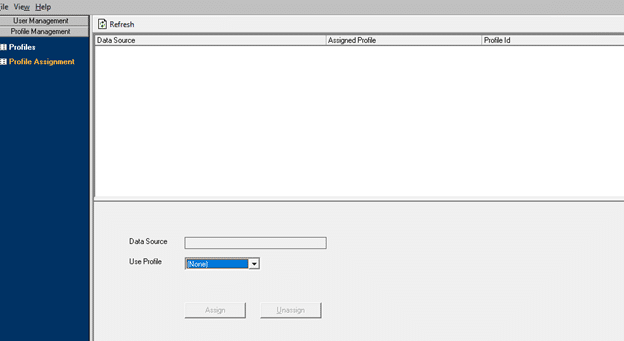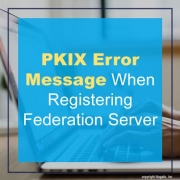Infor Cloudsuite allows you to add users into Lawson more easily then the traditional method of adding the user via Lawson Security Administrator or LID via the loaduser command.
- Login into Cloudsuite and Create a Service Request
- Select deployment and type Add User then click Next
- Download the sample CSV File so we can create a template file with user info and load back in.
- Fill out your user information based on the organization domain, identity setup etc. (You can view existing users in LSA or ISS to get an example if this is your first time).
- Once complete, click Select File and select the template file you just competed and Submit
- Once it completes, you should be notified and see the status as Success
Done!
In many mergers and acquisitions (M & As), retention problems can lead to negative employee attitudes. High-level organizations can lose influential executives and board members, which can damage the deal’s success, and corporate culture and perception can also suffer. Starting with early negotiations and meetings with the team on the integration of the merged corporate culture, regular dialogue between the two merged management and the employees is crucial to ensure alignment towards a shared vision. Keep the services of qualified consultants who understand the merger objectives of the company and have the skills to achieve them. Build an M&A team and select a coach for the M&A leader so that the team leader can focus on how the new company will be integrated into the company leadership, be sensitive to cultural differences, lead the change process and retain and motivate key employees.
Aside from the obvious HR concerns in Merger and Acquisitions, there is the underlying business philosophy differences which might translated to technology differences. One consideration is how do the two organization manage their inventory. Is it something that can easily be combined in the same system? If not, is it better to keep two systems going even though you are in the same industry?
Even if the inventory is very similar, there could be regional differences that make it very difficult to source the same items in all of the various regions that the combined company might encompass. There could be differences in how the inventory is purchased as well. For example, a grocery chain that basically has the same products in all of their stores is one view of how to manage multiple locations and makes re-ordering easy. All stores carry the same products and therefore it is easy to repeat merging with other stores and converting them to the same products your other stores carry. A repeatable process.
If merging with another grocery chain that allows all of the products to be determined by the store or department manager, then it is a much more complex process to merge these two grocery chains. There is at the core a basic difference between their philosophies about how to manage inventory. This might be the hidden elephant in the room that no one considered during the M&A negotiations.
In conclusion, make sure that the way that business is conducted at both organizations – the operational philosophies – is compatible with the technology that you are planning on using for the combined organization. The HR side of things are easier to manage as everyone is aware of them going into negotiations. It’s the hidden business philosophies that often get left out and cause the biggest upset of successfully combining the organizations.
If you are getting an error message in Lawson Security Administrator that references “No record found for given key PDLSET1 in PRODLINE”, it is possible that your Lawson instance has lost connection from the database and is unable to recover. This can happen during an unexpected restart of the system, or a network outage. To resolve the issue, simple stop and restart the Lawson services, including the IBM WebSphere services. The startup order is:
- Insight environment
- IBM WebSphere Cell Manager
- IBM WebSphere Node
- IBM WebSphere application server
With the latest java update, some instances of Lawson are throwing exceptions. The portal is throwing a 404 error, and SSOCfgInfoServlet throws a 500 error.
In this scenario, the security_authen.log is throwing an exception “Failed to initialize authentication layer.” The lase_server_0_0.log has a much more detailed error message referring to “Client requested protocol TLSv1 is not enabled or supported in server context”.
To resolve the issue, edit the java.security file at JAVA_HOME/jre/lib/security. Update the jdk.tls.disabledAlgorithms line to include TLSv2.
This is a temporary solution; Infor is working on a permanent solution to resolve this issue.
security_authen.log
Thu Aug 12 10:02:49.303 CDT 2021 – default-421637524 – L(4) : tenantID=DEFAULT thread=main. CacheManager.setRefreshInterval(): RefreshInterval =null is invalid.
Thu Aug 12 10:02:49.309 CDT 2021 – default-421637524 – L(4) : tenantID=DEFAULT thread=main. CacheManager.setRefreshInterval(): RefreshInterval =28800 seconds
Thu Aug 12 10:02:49.309 CDT 2021 – default-421637524 – L(4) : tenantID=DEFAULT thread=main. CacheManager.getCacheProperties: cache properties were initialized: Development=false, Instance=com.lawson.security.util.cache.ConcurrentCache, RefreshInterval=28800,
Thu Aug 12 10:05:55.179 CDT 2021 – default–932566529 – L(2) : error starting up SecEvent servlet, original message: Failed to initialize authentication layer. Cause Connection error (server.company.com, null). Cause: {2}.
Stack Trace :
com.lawson.security.authen.SecurityAuthenException: Connection error (server.company.com, null). Cause: {2}.
at com.lawson.security.authen.LawsonAuthentication.initClientAuthenDatThroughSSL(LawsonAuthentication.java:449)
at com.lawson.security.authen.LawsonAuthentication.initClientAuthenDat(LawsonAuthentication.java:307)
at com.lawson.security.authen.LawsonAuthentication.remoteInit(LawsonAuthentication.java:2593)
at com.lawson.security.authen.LawsonAuthentication.initializeForTenant(LawsonAuthentication.java:244)
at com.lawson.security.authen.LawsonAuthentication.performInitializeForTenant(LawsonAuthentication.java:181)
at com.lawson.security.authen.LawsonAuthentication.initializeForTenant(LawsonAuthentication.java:127)
at com.lawson.security.authen.LawsonAuthentication.initialize(LawsonAuthentication.java:116)
at com.lawson.security.authen.SecEventServlet.init(SecEventServlet.java:86)
at com.ibm.ws.webcontainer.servlet.ServletWrapper.init(ServletWrapper.java:345)
at com.ibm.ws.webcontainer.servlet.ServletWrapperImpl.init(ServletWrapperImpl.java:168)
at com.ibm.ws.webcontainer.servlet.ServletWrapper.loadOnStartupCheck(ServletWrapper.java:1369)
at com.ibm.ws.webcontainer.webapp.WebApp.doLoadOnStartupActions(WebApp.java:649)
Lase_server_0_0.log
21-08-12 10:10:46:682 12 default.SEVERE authen.SSOServer.run(): SSOServer: Got unexpected exception when processing new secured connection com.lawson.security.server.LawsonNetException: Got exception while writing to connection /11.111.111.11,10001
Stack Trace : com.lawson.security.server.LawsonNetException: Got exception while writing to connection /11.111.111.11,10001
at com.lawson.security.server.AbstractDefaultEventSource.write(AbstractDefaultEventSource.java:299)
at com.lawson.security.server.Connection.<init>(Connection.java:170)
at com.lawson.lawsec.authen.SecuredConnection.<init>(SecuredConnection.java:39)
at com.lawson.lawsec.authen.SSOServer.run(SSOServer.java:180)
Caused by: javax.net.ssl.SSLHandshakeException: Client requested protocol TLSv1 is not enabled or supported in server context
at sun.security.ssl.Alert.createSSLException(Alert.java:131)
at sun.security.ssl.Alert.createSSLException(Alert.java:117)
at sun.security.ssl.TransportContext.fatal(TransportContext.java:357)
at sun.security.ssl.TransportContext.fatal(TransportContext.java:313)
at sun.security.ssl.TransportContext.fatal(TransportContext.java:304)
at sun.security.ssl.ClientHello$ClientHelloConsumer.negotiateProtocol(ClientHello.java:740)
at sun.security.ssl.ClientHello$ClientHelloConsumer.onClientHello(ClientHello.java:705)
at sun.security.ssl.ClientHello$ClientHelloConsumer.consume(ClientHello.java:683)
Update JAVA_HOME/jre/lib/security/java.security
You may encounter an error message when running a federation sync after Lawson is federated to Landmark. There can be many causes of these errors, so it is important to start reviewing logs on both servers for more details. In this case, the security_provisioning.log on LSF and the security_authen.log on LMK indicated a PKIX error “got exception while reading from connection.”
There is a workaround for this error. Open LAWDIR/system/lsservice.properties on LSF and LADIR/system/lsservice.properties on Landmark. In both files, add the line “server.keystore.use.classic=false”. Reboot both machines and try the sync again.
Security_provisioning.log (LSF)
Security_authen.log (LMK)
Lsservice.properties (both)
An Enterprise Resource Planning System (ERP) is a business process management software that enables companies to integrate and manage automated processes in one place. ERP software offers the advantages of optimized and integrated business processes, lower operating costs, improved reporting capacity, data security and increased productivity. Solutions Review is an online directory of ERP vendors, platforms and software solutions that contains a condensed overview, contact information, links to the company’s social media handlers and the top 24 vendors.
Your company needs to identify the exact solutions and automation capabilities it needs in an ERP system to determine which system best serves your specific needs. You should create a cross-functional team that consists of accounting, supply chain, IT and possibly HR personnel that are part of the selection team; people who know how your business is run day-to-day. One of the worst mistakes companies make in selecting an ERP system is having the executives watch a snazzy sales presentation with all the reporting at the end and decide on bells and whistles instead of what your company needs to perform your day-to-day processes. All ERP systems provide reporting capabilities. There are many inexpensive tools to create reporting dashboards for any ERP system so this should not be a deciding factor.
As a selection tool, it might be good to create a spreadsheet which lists the functions of an ERP system that your organization needs. These vary by company so your spreadsheet may look entirely different from another company’s spreadsheet. Then have everyone on the cross-functional selection team rate the various ERP companies on their ability to provide each function on a 1 – 5 scale, for example. Then totaling the scores will provide a good idea about which ERP solution best fits your overall needs. Don’t forget to include the integration piece in your evaluation for making sure you can easily integrate any other software that your organization needs so you end up with a fully automated system. Using this type of selection criteria: multi-functional, objective scoring on each function, allows you to end up with an objective way of making a decision based on the overall needs of your organization.
The cost of an ERP system is composed of license fees (depending on how many users you have), the software itself, the modules you choose, the host hardware, installation, maintenance, training and support. The Software Path Report 2019 states that you can expect to spend up to $7,200 per user on your system on average – and that’s a big investment – a reminder that ERP selection is a long-term consideration. In the traditional view of your ERP – selection, you don’t need to choose the most expensive; choose the system which you can get the best fit for your business.

























